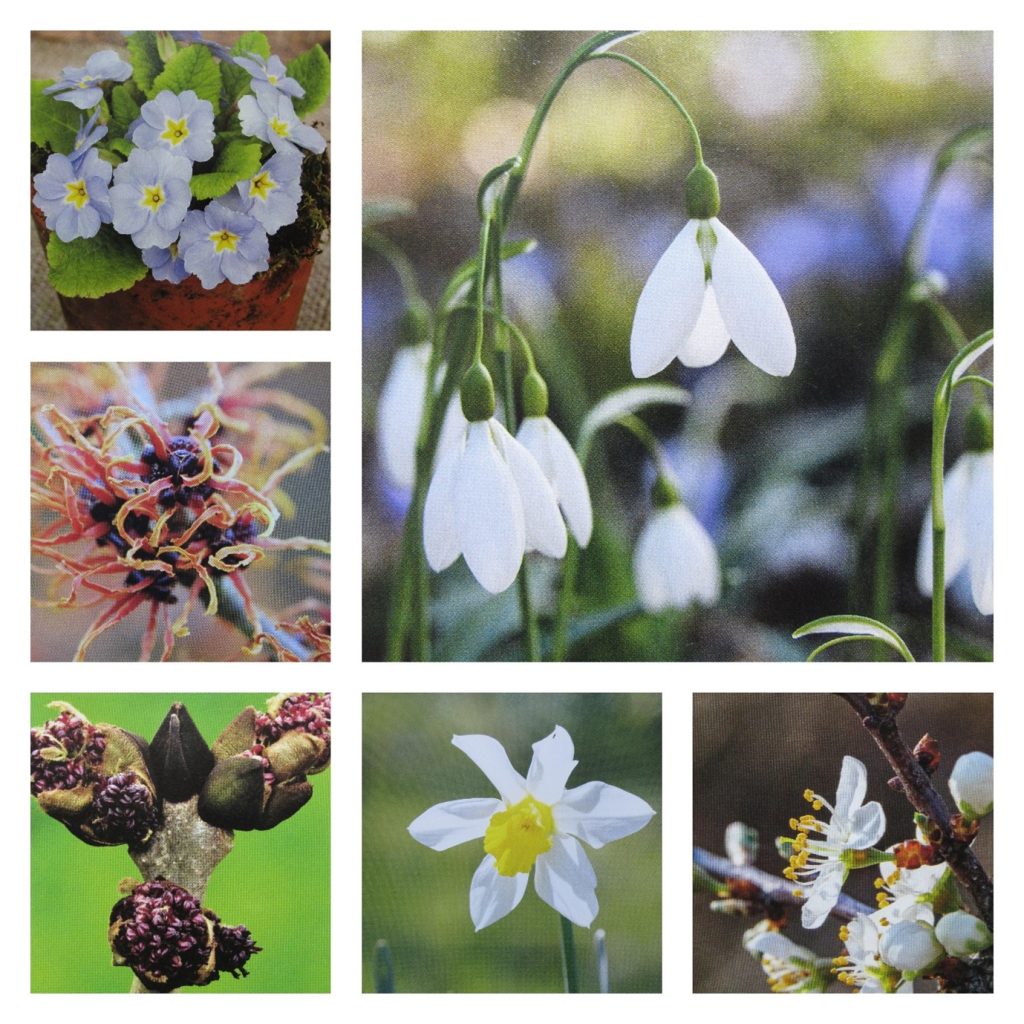You can download a pdf version here
I thought it would be a change to do a gentle picture quiz this time, much more as a prompt for us to think about familiar wildlife than a competition, but I will go through them with you quickly when we next get together. No marks, just a chance for us to enjoy all the images and put our thinking caps on...

Can you name the flowers shown, and say which arrive first, and what conditions they like in order to thrive?
Which ones are native and where do the others come from?
Which flowers have scent and which are best for early pollinators?
Can you name 3 more flowers or shrubs that bloom in February?
How can you tell toads and frogs apart?
What type of spawn do they each lay, and where do they spend the winter months?
What type of pond suits them best, what other wildlife benefits from a pond, and where should we site one in our garden?
Can you name the different woodpeckers in this image?
How do you tell male and females apart?
What type of trees do they like the most, and what adaptations do they have to protect them when they are ‘drumming’?
What is their favourite food and how do they find it?
Which birds are shown in two of the pictures and which family of birds do the two species belong to?
What characteristics do the two species have in common and what behaviour is being demonstrated in the picture?
What is the other image showing, on what type of tree, and what makes it occur?
Can you name all the birds shown here, and say which are members of the same family?
How do you tell them apart?
Which is the most endangered and where do they all prefer to make their nest?
Which is the first bird to start building their nest?
What is the name and sequence of the elaborate courtship dance of the pair shown together?
Can you name all the lovely creatures shown here, and say what triggers each of them to become more active?
What is the largest mammal doing in the picture?
Which species hibernate and which overwinter and what factors influence why an animal needs to hibernate?
For each shown, what is their usual habitat and favourite food?
Which one is most endangered, and why?
I hope you can all have fun answering the questions for yourselves, or simply enjoy looking at the images of our native wildlife, whether commonly seen or a rare treat. We have fantastic wildlife to learn about together and cherish, even on our doorstep, which I feel makes a really positive impact on our daily lives.
I will write the last of this series of 3 winter newsletters towards the end of February, and really look forward to when we can all meet up again in Spring.
Take extra good care of yourselves until then and warmer weather, excellent company and cake beckon us onwards. Warmest wishes, Jan xx